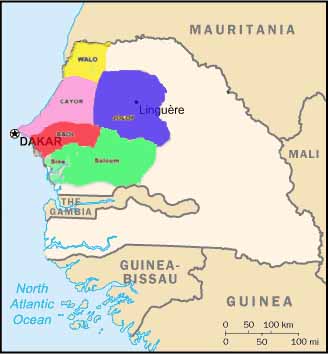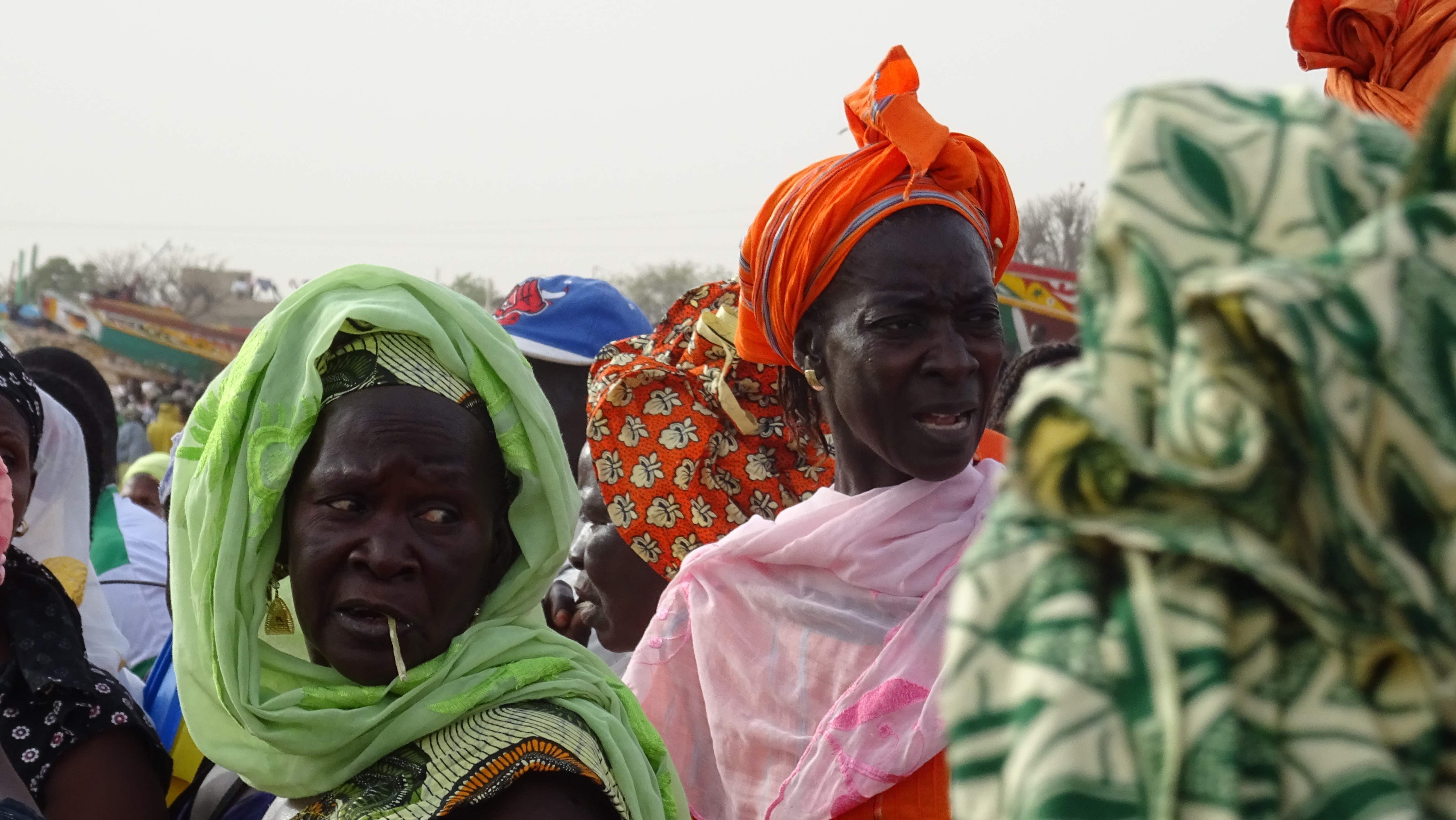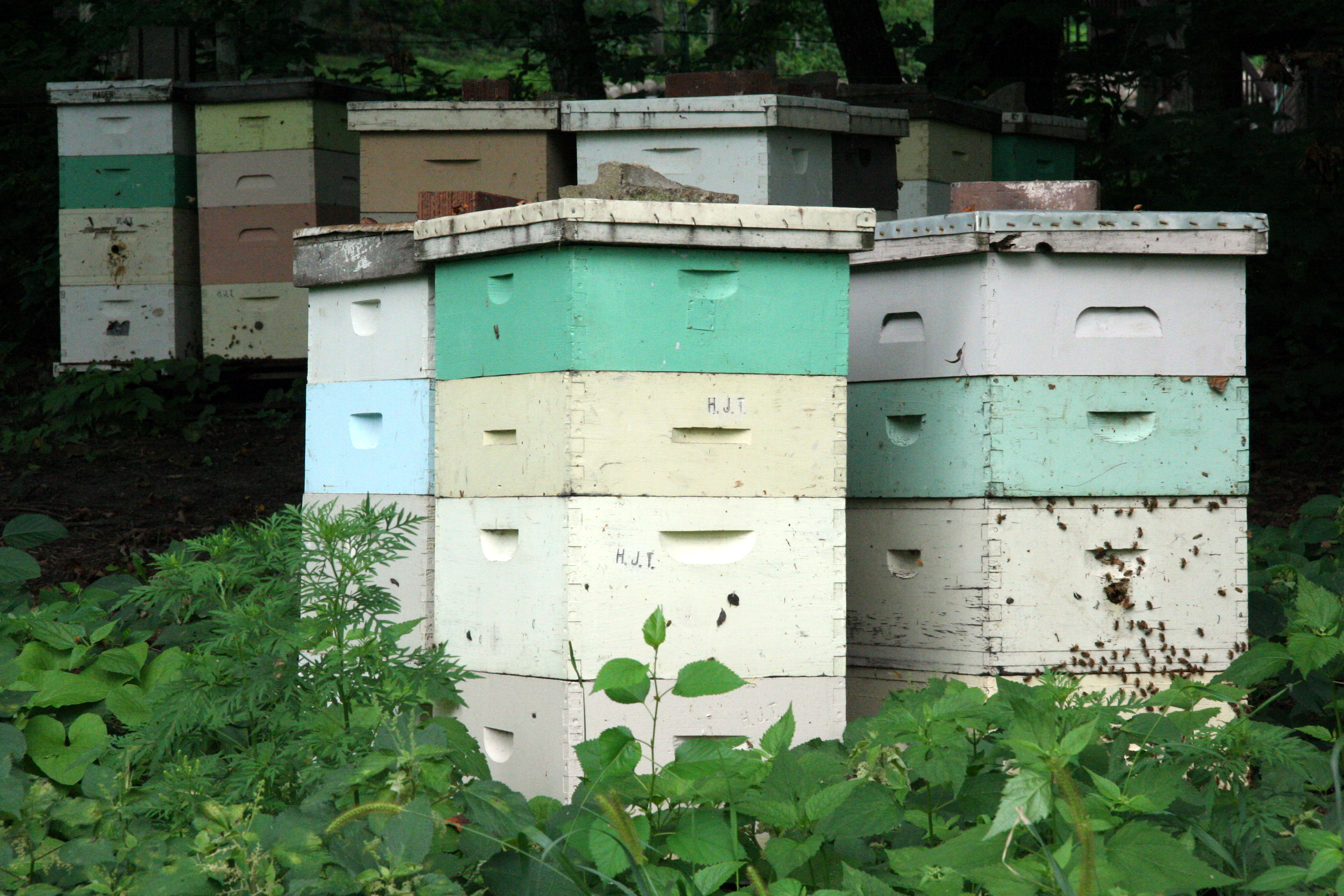|
Vietnamese Community In Senegal
The Vietnamese people in Senegal consists of both expatriate technicians and labourers from Vietnam, as well as the mixed-race descendants of early 20th-century migrants. A total of several hundred are estimated to live in Senegal; the national capital Dakar even boasts a few Vietnamese restaurants. Migration history Both being former French colonies, Vietnam and Senegal have a long history of cultural links. Beginning in the 1930s, many Senegalese began serving in Vietnam as soldiers for France; some took local wives, with whom they had children. However, in the turbulent 1940s, with World War II and the First Indochina War, many Vietnamese women married to Senegalese followed their husbands back to Senegal. By 2007, Jean Gomis, himself a Vietnamese descendant and an unofficial "community leader", estimated that fewer than five of those wives remained alive, while 300 of their descendants lived scattered throughout Senegal. They retained some knowledge of the Vietnamese language a ... [...More Info...] [...Related Items...] OR: [Wikipedia] [Google] [Baidu] |
Expatriate
An expatriate (often shortened to expat) is a person who resides outside their native country. In common usage, the term often refers to educated professionals, skilled workers, or artists taking positions outside their home country, either independently or sent abroad by their employers. However, the term 'expatriate' is also used for retirees and others who have chosen to live outside their native country. Historically, it has also referred to exiles. Expatriates are immigrants or emigrants who maintain cultural ties such as the language of their country of origin. Etymology The word ''expatriate'' comes from the Latin terms '' ex'' ("out of") and ''patria'' ("native country, fatherland"). Semantics Dictionary definitions for the current meaning of the word include: :Expatriate: :* 'A person who lives outside their native country' (Oxford), or :* 'living in a foreign land' (Webster's). These definitions contrast with those of other words with a similar meaning, such a ... [...More Info...] [...Related Items...] OR: [Wikipedia] [Google] [Baidu] |
Global South
The concept of Global North and Global South (or North–South divide in a global context) is used to describe a grouping of countries along socio-economic and political characteristics. The Global South is a term often used to identify regions within Latin America, Asia, Africa, and Oceania. It is one of a family of terms, including "Third World" and "Periphery", that denote regions outside Europe and North America. Most, though not all, of these countries are low-income and often politically or culturally marginalized on one side of the divide, while on the other side are the countries of the Global North (often equated with developed countries). As such, the term does not inherently refer to a geographical south; for example, most of the Global South is geographically within the Northern Hemisphere. The term as used by governmental and developmental organizations was first introduced as a more open and value-free alternative to "Third World" and similarly potentially "valuin ... [...More Info...] [...Related Items...] OR: [Wikipedia] [Google] [Baidu] |
Ethnic Groups In Senegal
There are various ethnic groups in Senegal, The Wolof according to CIA statistics are the majority ethnic group in Senegal. Many subgroups of those can be further distinguished, based on religion, location and language. According to one 2005 estimate, there are at least twenty distinguishable groups of largely varying size. Major groups *The largest group is the Wolof, representing 43.3% of the population of the country. They live predominantly in the west, having descended from the kingdoms of Cayor, Waalo and Jolof that once existed in that area. Their population is focused in large urban centres. Most are Muslim, being either Mouride or Tijānī. The Lebou people of Cap-Vert and Petite Côte are considered a subgroup of the Wolof. however they represent less than 1% of its population. The prevalence of the Wolof both linguistically and politically has continued to increase throughout the years; this tendency has been called the " wolofisation" of Senegal. *The Fula, those ... [...More Info...] [...Related Items...] OR: [Wikipedia] [Google] [Baidu] |
Asian Diaspora In Africa
{{disambiguation ...
Asian may refer to: * Items from or related to the continent of Asia: ** Asian people, people in or descending from Asia ** Asian culture, the culture of the people from Asia ** Asian cuisine, food based on the style of food of the people from Asia ** Asian (cat), a cat breed similar to the Burmese but in a range of different coat colors and patterns * Asii (also Asiani), a historic Central Asian ethnic group mentioned in Roman-era writings * Asian option, a type of option contract in finance * Asyan, a village in Iran See also * * * East Asia * South Asia * Southeast Asia * Asiatic (other) Asiatic refers to something related to Asia. Asiatic may also refer to: * Asiatic style, a term in ancient stylistic criticism associated with Greek writers of Asia Minor * In the context of Ancient Egypt, beyond the borders of Egypt and the cont ... [...More Info...] [...Related Items...] OR: [Wikipedia] [Google] [Baidu] |
Vietnamese People
The Vietnamese people ( vi, người Việt, lit=Viet people) or Kinh people ( vi, người Kinh) are a Southeast Asian ethnic group native to modern-day Northern Vietnam and Dongxing, Guangxi, Southern China (Jing Islands, Dongxing, Guangxi). The native language is Vietnamese language, Vietnamese, the most widely spoken Austroasiatic language. Vietnamese Kinh people account for just over 85.32% of the population of Vietnam in the 2019 census, and are officially known as Kinh people () to distinguish them from the other ethnic groups in Vietnam, minority groups residing in the country such as the Hmong people, Hmong, Chams, Cham, or Muong people, Mường. The Vietnamese are one of the four main groups of Vietic languages, Vietic speakers in Vietnam, the others being the Muong people, Mường, Thổ people, Thổ, and Chứt people. They are related to the Gin people, Gin people, a Vietnamese ethnic group in China. Terminology According to Churchman (2010), all endonyms and ... [...More Info...] [...Related Items...] OR: [Wikipedia] [Google] [Baidu] |
Wolof Language
Wolof (; Wolofal: ) is a language of Senegal, Mauritania, and the Gambia, and the native language of the Wolof people. Like the neighbouring languages Serer and Fula, it belongs to the Senegambian branch of the Niger–Congo language family. Unlike most other languages of the Niger-Congo family, Wolof is not a tonal language. Wolof is the most widely spoken language in Senegal, spoken natively by the Wolof people (40% of the population) but also by most other Senegalese as a second language. Wolof dialects vary geographically and between rural and urban areas. The principal dialect of Dakar, for instance, is an urban mixture of Wolof, French, and Arabic. ''Wolof'' is the standard spelling and may also refer to the Wolof ethnicity or culture. Variants include the older French , , , Gambian Wolof, etc., which now typically refers either to the Jolof Empire or to jollof rice, a common West African rice dish. Now-archaic forms include ''Volof'' and ''Olof''. English is believed ... [...More Info...] [...Related Items...] OR: [Wikipedia] [Google] [Baidu] |
M'Bour
M'Bour or Mbour ( ar, مبور; Wolof: ''Mbuur''), is a city in the Thiès Region of Senegal. It lies on the Petite Côte, approximately eighty kilometers south of Dakar. It is home to a population of nearly 233,000 (2013 census). The city's major industries are tourism, fishing and peanut processing. M'Bour is a tourist destination. It is situated on the "Little Coast" and connected to Dakar via the N1 road. It is noteworthy for the orphanage and nursery for children run by the international NGO Vivre Ensemble, and for the African Institute for Mathematical Sciences, Senegal. 140 migrants drowned on October 29, 2020 when a boat from M'Bour that was bound for the Canary Islands capsized near Saint-Louis, Senegal. Notable residents or natives * Viviane N'Dour, Singer * Youssou Diagne, Politician * Ibrahima Niane, Footballer Gallery Image:Gettingfish.jpg, Port of M'Bour in Senegal Image:M'bour harbor.jpeg, Port of M'Bour, Senegal Image:Streetsmbour2.jpg, Streets near the p ... [...More Info...] [...Related Items...] OR: [Wikipedia] [Google] [Baidu] |
Nem Rán
Nem (Vietnamese: món nem) refers to various dishes in Vietnamese, depending on the locality. Nem may refer to: *Nem rán, known in foreign countries as spring rolls, fried rolls or Vietnamese Imperial rolls, are made of either minced pork or prawns, wrapped in bánh tráng and deep fried. In southern Vietnam, it is referred to as chả giò. Nem rán rế is a similar dish as nem rán; however, it is wrapped in woven bánh tráng. *Nem cuốn (Gỏi cuốn in southern Vietnam), nem rolls, salad rolls, or summer rolls, is a Vietnamese dish traditionally consisting of pork, prawns, vegetables, bún (rice vermicelli), fresh herbs and other ingredients wrapped in Vietnamese bánh tráng. In southern Vietnam, it is referred to as gỏi cuốn. * Nem chua is a Vietnamese fermented pork dish, usually rolled or cut in bite sizes. The meat is sweet, sour, salty and spicy. It is often served with bird's eye chili, garlic and Vietnamese coriander. *Nem chua rán are a type of ''nem'' made ... [...More Info...] [...Related Items...] OR: [Wikipedia] [Google] [Baidu] |
Senegalese Tirailleurs
The Senegalese Tirailleurs (french: Tirailleurs Sénégalais) were a corps of colonial infantry in the French Army. They were initially recruited from Senegal, French West Africa and subsequently throughout Western, Central and Eastern Africa: the main sub-Saharan regions of the French colonial empire. The noun ''tirailleur'', which translates variously as 'skirmisher', 'rifleman', or 'sharpshooter', was a designation given by the French Army to indigenous infantry recruited in the various colonies and overseas possessions of the French Empire during the 19th and 20th centuries. Despite recruitment not being limited to Senegal, these infantry units took on the adjective since that was where the first black African Tirailleur regiment had been formed. The first ''Senegalese Tirailleurs'' were formed in 1857 and served France in a number of wars, including World War I (providing around 200,000 troops, more than 135,000 of whom fought in Europe and 30,000 of whom were killed) and W ... [...More Info...] [...Related Items...] OR: [Wikipedia] [Google] [Baidu] |
Nước Mắm
Fish sauce is a liquid condiment made from fish or krill that have been coated in salt and fermented for up to two years. It is used as a staple seasoning in East Asian cuisine and Southeast Asian cuisine, particularly Myanmar, Cambodia, Laos, Philippines, Thailand, and Vietnam. Some garum-related fish sauces have been used in the West since the Roman times. Due to its ability to add a savory umami flavor to dishes, it has been embraced globally by chefs and home cooks. The umami flavor in fish sauce is due to its glutamate content. Fish sauce is used as a seasoning during or after cooking, and as a base in dipping sauces. Soy sauce is regarded by some in the West as a vegetarian alternative to fish sauce though they are very different in flavor. History Asia Sauces that included fermented fish parts with other ingredients such as meat and soy bean were recorded in China, 2300 years ago. During the Zhou dynasty of ancient China, fish fermented with soybeans and salt was us ... [...More Info...] [...Related Items...] OR: [Wikipedia] [Google] [Baidu] |
Beehive
A beehive is an enclosed structure in which some honey bee species of the subgenus '' Apis'' live and raise their young. Though the word ''beehive'' is commonly used to describe the nest of any bee colony, scientific and professional literature distinguishes ''nest'' from ''hive''. ''Nest'' is used to discuss colonies that house themselves in natural or artificial cavities or are hanging and exposed. ''Hive'' is used to describe an artificial/man-made structure to house a honey bee nest. Several species of ''Apis'' live in colonies, but for honey production the western honey bee (''Apis mellifera'') and the eastern honey bee (''Apis cerana'') are the main species kept in hives. The nest's internal structure is a densely packed group of hexagonal prismatic cells made of beeswax, called a honeycomb. The bees use the cells to store food (honey and pollen) and to house the brood (eggs, larvae, and pupae). Beehives serve several purposes: production of honey, pollination of nearby ... [...More Info...] [...Related Items...] OR: [Wikipedia] [Google] [Baidu] |
Honey Extractor
A honey extractor is a mechanical device used in the extraction of honey from honeycombs. A honey extractor extracts the honey from the honey comb without destroying the comb. Extractors work by centrifugal force. A drum or container holds a frame basket which spins, flinging the honey out. With this method the wax comb stays intact within the frame and can be reused by the bees. Bees cover the filled in cells with wax cap that must be removed (cut by knife, etc.) before centrifugation. History In 1838, Johann Dzierzon, a German Roman Catholic priest and beekeeper devised the first practical movable-comb beehive, allowing for the manipulation of individual honeycombs without destroying the structure of the hive. This idea was further developed by L. L. Langstroth, an American pastor and beekeeper in Philadelphia, Pennsylvania who patented his beehive design in 1852. These frames were a major improvement over the old method of beekeeping using hollowed tree trunks and skeps ... [...More Info...] [...Related Items...] OR: [Wikipedia] [Google] [Baidu] |








.jpg)